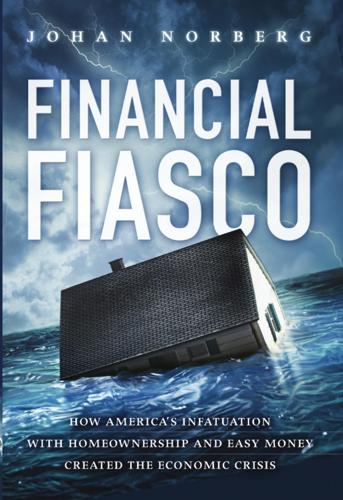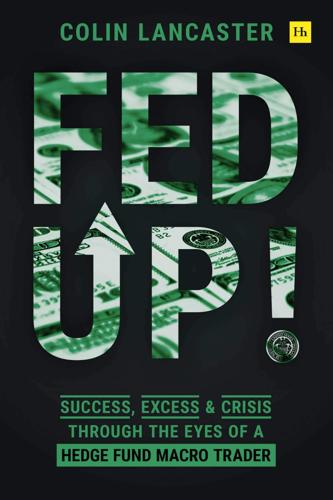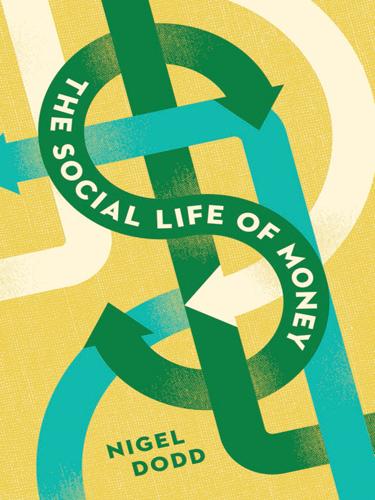National Debt Clock
description: clock displaying the national debt of the United States of America
12 results

The Deficit Myth: Modern Monetary Theory and the Birth of the People's Economy
by
Stephanie Kelton
Published 8 Jun 2020
The Mercator Research Institute on Global Commons and Climate Change (MCC) runs a carbon clock, counting down the days until humanity has emitted all the greenhouse gases it can afford and still stay under 2 degrees of warming.65 It’s similar to the US National Debt Clock mounted in New York City, displaying the historical record of prior deficit spending.66 But unlike the National Debt Clock, the MCC’s carbon clock is tracking a deficit that actually matters. As of this writing, and at current rates of emission, we have a little less than twenty-six years to solve our climate deficit. The Democracy Deficit You might think there couldn’t possibly be any deficit more consequential than the fate of the global climate that sustains human civilization.
…
David Roberts, “What Genuine, No-Bullshit Ambition on Climate Change Would Look Like,” Vox, October 8, 2018, www.vox.com/energy-and-environment/2018/5/7/17306008/climate-change-global-warming-scenarios-ambition. 65. MCC, “That’s How Fast the Carbon Clock Is Ticking,” Mercator Research Institute on Global Commons and Climate Change, December 2018, www.mcc-berlin.net/en/research/co2-budget.html. 66. Kimberly Amadeo, “The US National Debt Clock and Its Warning,” The Balance, February 13, 2019, www.thebalance.com/u-s-national-debt-clock-definition-and-history-3306297. 67. WEF, The Inclusive Development Index 2018: Summary and Data Highlights (Geneva, Switzerland: World Economic Forum, 2018), www3.weforum.org/docs/WEF_Forum_IncGrwth_2018.pdf. 68. Quentin Fottrell, “Alone,” MarketWatch, October 10, 2018, www.marketwatch.com/story/america-has-a-big-loneliness-problem-2018-05-02. 69.

Financial Fiasco: How America's Infatuation With Homeownership and Easy Money Created the Economic Crisis
by
Johan Norberg
Published 14 Sep 2009
In 1989, the real-estate tycoon Seymour Durst put a digital counter on the sidewall of a building near Times Square in New York City. It was a "national-debt clock," and Durst's aim was to highlight the fact that the U.S. national debt had attained an unbelievable $2.7 trillion and kept growing. In 2004, it was replaced with a new clock that could count backward as well. That was overly optimistic. Up was the only way the clock ever had to go, and on September 30, 2008, it reached its upper limit as the debt passed $10 trillion for the first time. That meant the display had run out of digits. A new national-debt clock will soon be put up, with room for two more digits, just to make sure.

The New Class Conflict
by
Joel Kotkin
Published 31 Aug 2014
Neil Howe, “‘Dear Graduating Class of 2012: You Are So Not Special,’” The Saeculum Decoded, June 20, 2012, http://blog.lifecourse.com/2012/06/dear-graduating-class-of-2012-you-are-so-not-special. 14. U.S. National Debt Clock, http://www.usdebtclock.org. 15. Walter Russell Mead, “Time to Occupy State Pensions?” American Interest, June 25, 2012, http://www.the-american-interest.com/wrm/2012/06/25/time-to-occupy-the-pension-funds. 16. U.S. National Debt Clock; Bruno Waterfield, “Germany to Impose Tax on the Young to Help the Old,” Telegraph (UK), April 4, 2012; Mariko Kato, “Experts Say Japan Must Change How It Is Handling Its Birthrate,” Japan Times, January 5, 2010; Yuka Hayashi, John Murphy, and Daisuke Wakabayashi, “As Factories Vanish, Japan Seeks to Fashion a New Economy,” Wall Street Journal, April 14, 2009; Yuka Hayashi, “Japan Lifts Sales Tax to Tackle Debt,” Wall Street Journal, August 11, 2012. 17.

The Post-American World: Release 2.0
by
Fareed Zakaria
Published 1 Jan 2008
They issued bonds to pay for pet projects, bonds that were backed by future taxes or lottery earnings. But even those politicians were put to shame by the true king of borrowers: the federal government. In 1990, the national debt stood at $3 trillion. By the end of 2008, it had climbed into the eleven-digit realm, surpassing $10 trillion. The famous National Debt Clock in New York City ran out of space to display all the figures. (Its owners plan to install a new and expanded clock.) Thanks to the extraordinary bailouts and stimulus measures of recent years, the national debt was just shy of $14 trillion at the end of 2010. The United States became a nation of debtors, in other words.
…
Raja, 166 monarchy, 76, 123–24 Mondale, Walter, 251 Monier-Williams, Monier, 170 Montgomery, Bernard Law, 254 Morocco, 17, 209, 239–41, 278 Morocco bombings (2003), 17 Morris, James, 184 mortgages, 42, 46, 85, 152, 217, 222, 225 Mountbatten, Louis, 36, 164 Moynihan, Daniel Patrick, 74 MRI machines, 30 Mugabe, Robert, 109, 131 multiculturalism, 65 multilateralism, 246–55, 267–69 multipolar order, 1–5, 39, 52–53, 233, 241–42, 243–50, 266–69, 274 multi-spindle wheel, 72 Mumbai, 150, 173, 180, 210 Mumtaz Mahal, 70–71 Mussolini, Benito, 195 Mutual Assured Destruction, 140 Naím, Moisés, 130 Nanjing, 63 nanotechnology, 200–202, 215 Napoleon I, Emperor of France, 100 Nasser, Gamal Abdul, 84–85 National Academy of Sciences, 204 national debt, 46–49, 130, 138, 140, 217–19, 241–42 National Debt Clock, 46 nationalism, 34–42, 43, 76, 101, 134–35, 143, 145, 158–59, 180–83, 192, 274 nationalization, 197 national saving, 218 National Science Foundation, 205 nation-states, 34–42, 75 natural gas, 31, 129, 260 natural resources, 6, 30–34, 38, 65, 103–4, 115, 129–32, 232, 260 Nazism, 10, 25, 36–37, 143, 266, 275, 276 Needham, Joseph, 122–23 Nehru, Jawaharlal, 84, 86, 154, 156, 162–65, 169, 173, 177, 181 neoconservatives, 141–42, 247, 253 Netherlands, 67, 72, 79, 80, 188, 209 New Delhi, India, 150 Newsweek, 96, 227 New World, 79, 80, 187 “new world order,” 38 New York, N.Y., 48, 221, 224 New York Times, 163, 188, 203, 258 Nigeria, 60, 86, 98, 130, 149 Nixon, Richard M., 233, 284 Nobel Prize, 139, 210, 215 nonaccelerating inflation rate of unemployment (NAIRU), 217 nonalignment policy, 163–66, 177 nongovernmental organizations (NGOs), 5, 34, 39, 57, 168, 173, 272 North Africa, 12–13, 20, 80 North America, 78–79 North Atlantic Treaty Organization (NATO), 13, 173, 247, 268 North Korea, 6, 19, 20, 141, 175, 235–36, 246, 259, 264 Nuclear Nonproliferation Treaty (1968), 174–78, 265 nuclear weapons, 6, 17, 29, 34, 96, 140, 142, 167, 174–78, 249, 251, 256, 259–60, 265, 273, 275 Nunn, Sam, 265 Nye, Joseph, 121 Obama, Barack, xii, 139, 178, 251, 256, 259, 266, 279 Odah, Salman al-, 14–15 Oglethorpe University, 276 oil, 6, 30–32, 38, 115, 232–33, 260 Olympic Games, 5, 103, 105, 137, 187 Omdurman, Battle of, 188 one-child policy, 148, 214n O’Neill, Thomas P.

Retirementology: Rethinking the American Dream in a New Economy
by
Gregory Brandon Salsbury
Published 15 Mar 2010
Endnotes 1 Hopkins, Jerry, Anthony Bourdain, and Michael Freeman, Extreme Cuisine: The Weird & Wonderful Foods That People Eat, 2009. 2 Gold Bulletin, “Gold leaf tops $1,000 sushi roll,” April 17, 2008. 3 Cooking Resources, “Cooking With Edible Metals Like Gold, Silver,” October 29, 2009. 4 Gold Bulletin, “Gold leaf tops $1,000 sushi roll,” April 17, 2008. 5 Business Week, “After the Housing Boom,” April 11, 2005. 6 Credit Card News, “Ditching credit cards right move for some,” September 22, 2008. 7 NPR, “Credit Card Companies Raise Minimum Payments,” November 4, 2005. 8 The New York Times, “Economy Fitful, Americans Start to Pay As They Go,” February 5, 2008. 9 The New York Times, “Given a Shovel, Americans Dig Deeper Into Debt,” July 20, 2008. 10 The New York Times, “Given a Shovel, Americans Dig Deeper Into Debt,” July 20, 2008. 11 USA Today, “Obama team makes it official: Budget deficit hits record. By a lot,” October 16, 2009. 12 The American, “Debt Be Not Proud: The Sorry Tale of America’s Out-of-Control Spending,” September 7, 2009. 13 Brillig, U.S. National Debt Clock, as of January 14, 2010. 14 Market Watch, “Financial fears grow,” March 20, 2009. 15 Market Watch, “Financial fears grow,” March 20, 2009. 16 Market Watch, “Financial fears grow,” March 20, 2009. 17 Yahoo! Finance, Starbucks Corp. (SBUX): Historical Prices, Jan. 1, 2007–Dec. 31, 2007. 18 Navellier Growth, “As Starbucks (SBUX) Stumbles, Green Mountain Coffee Roasters (GMCR) Shines,” April 16, 2009. 19 Broadcast Engineering, “Big-screen LCD TV sales grow in 2007, research firm says,” February 19, 2008. 20 Recreational Boating & Fishing Foundation, Boating & Fishing Facts, 2006 Recreational Boating Statistical Abstract, 2007. 21 The New York Times, “Hummer’s Decline Puts Dealers at Risk,” March 31, 2009. 22 The New York Times, “MTV’s ‘Super Sweet 16’ Gives a Sour Pleasure,” April 26, 2006. 23 iStock Analyst, “Retail Survey Report: Cache Stores, Chili’s, Chuck E.

Extreme Money: Masters of the Universe and the Cult of Risk
by
Satyajit Das
Published 14 Oct 2011
In 1947 the directors of the Bulletin of Atomic Scientists at the University of Chicago created the doomsday clock. The minutes to midnight represent the time remaining to catastrophic destruction (midnight) of the human race from global nuclear war. In 1989 Seymour Darst, a New York real estate developer, created the financial equivalent. He installed the national debt clock—a billboard-size digital display on Sixth Avenue (Avenue of the Americas) in Manhattan, New York, that constantly updates to show the current U.S. public debt and each American family’s share of it. When this clock was originally erected, the U.S. national debt was under $3 trillion. The clock was switched off from 2000 to 2002 when the national debt briefly fell.
…
., 183, 328 MSNBC, 93 Mullins, David, 144, 248 multistrategy, 243 Mumbai Stock Exchange, 91 Münchau, Wolfgang, 351 Mundell, Robert, 170 municipal bonds, 211-214 TOBs (tender option bonds), 222 Murakami, Takashi, 324 Murder on the Orient Express, 302 Murdoch, Rupert, 149, 164, 322 Museum of Modern Art, 324 mutually assured destruction (MAD), 38 My Broker: A Monk Tycoon Reveals the 7 Laws of Spiritual Growth, 98 N Nader, Ralph, 326 Narvik, Norway, 221 National Australia Bank (NAB), 228 National City Bank, 342 national debt clock, 34 National Economic Council, 215 National Health Service, 47 National Homeownership Strategy, 181 National Public Radio (NPR), 185 natural gas, 251 negative amortization, 182 Nemesis, 366 nest eggs, 27 net risk, 240 networks, 270 vulnerability of, 272-273 Neues Deutschland, 260 Neutron Jack.

The Half-Life of Facts: Why Everything We Know Has an Expiration Date
by
Samuel Arbesman
Published 31 Aug 2012
How each of us implements these rather difficult solutions is certainly a personal choice, but the following are a number of suggestions. For example, there is a Web site called Worldometers. It is part of the Real Time Statistics Project and acts as a clearinghouse for the sorts of estimated real-time counters we have likely seen, such as the National Debt Clock near Times Square in New York City, which counts the U.S. debt. Worldometers aggregates counters from numerous organizations for such quantities as the current world population and the number of member countries in the United Nations, new books published this year, HIV/AIDS–infected individuals, the amount of coal left on Earth, and the number of species that have gone extinct this year.

Fed Up!: Success, Excess and Crisis Through the Eyes of a Hedge Fund Macro Trader
by
Colin Lancaster
Published 3 May 2021
Yeah, they’re more likely to be one of those “deaths of despair” that my friend in Paris is looking for. I bet that big mean one will be a miserable son of a bitch when he turns forty, dreams shattered. The daily grind will pulverize the little decency he had in him. More tequila and the national debt clock flashes through my mind like a bad PnL day. Our debt is up huge since I was in Vegas. It’ll probably be heading to $29 or $30 trillion by the end of the year. I wonder if they still have the clock ticking or whether they turned it off when they shut down the Strip. Day drinking soon becomes night drinking, and it’s now taking a toll.

The Dollar Meltdown: Surviving the Coming Currency Crisis With Gold, Oil, and Other Unconventional Investments
by
Charles Goyette
Published 29 Oct 2009
It proved to be the largest annual deficit in history. The $455 billion shortfall represented a 280 percent increase over the year before. A 12.5 percent jump in Pentagon spending, to $595 billion, and $18.2 billion to cover FDIC-insured deposits contributed to the deficit. Meanwhile, the counter on the National Debt Clock whirled past $10 trillion. The famous thirteen-digit clock installed in Times Square in 1989 couldn’t properly accommodate the higher numbers when the national debt broke into fourteen-digit territory on September 30. The clock operators, apparently expecting more of the same kind of reckless government we’ve been getting, plan to install a fifteen-digit clock.

I'm a stranger here myself: notes on returning to America after twenty years away
by
Bill Bryson
Published 6 Jun 2000
First, they have usually had quite a lot to drink at lunch, and, second, such numbers really are confusing. And that is the whole problem. Big numbers are simply beyond what we are capable of grasping. On Sixth Avenue in New York there is an electronic billboard, erected and paid for by some anonymous source, that announces itself as “The National Debt Clock.” When I was last there, it listed the national debt at $4,533,603,804,000—that’s $4.5 trillion—and the figure was growing by $10,000 every second, or so fast that the last three digits on the electronic meter were a blur. But what does $4.5 trillion actually mean? Well, let’s just try to grasp the concept of $1 trillion.

The Ascent of Money: A Financial History of the World
by
Niall Ferguson
Published 13 Nov 2007
That does not mean, however, that the bond market rules the world in the sense that James Carville meant. Indeed, the kind of discipline he associated with the bond market in the 1990s has been conspicuous by its absence under President Clinton’s successor, George W. Bush. Just months before President Bush’s election, on 7 September 2000, the National Debt Clock in New York’s Times Square was shut down. On that day it read as follows: ‘Our national debt: $5,676,989,904,887. Your family share: $73,733.’ After three years of budget surpluses, both candidates for the presidency were talking as if paying off the national debt was a viable project. According to CNN Democratic presidential nominee Al Gore has outlined a plan that he says would eliminate the debt by 2012.

The Social Life of Money
by
Nigel Dodd
Published 14 May 2014
Just as capital’s acceleration exonerates money of all previous involvements with production, so the mutation of money into a cancerous state severs all connections with a universe in which debts can be cleared. This situation—recall Walter Benjamin here—is a universal bankruptcy, binding us all together “just as accomplices are tied by their crime” (Baudrillard 1997: 39). It is a common destiny served on credit. Baudrillard frames it using the national debt clock on 42nd Street in New York. The total on the debt clock rises inexorably; indeed, it ran out of digits in 2008 when the U.S. national debt exceeded $10 trillion for the first time. It is a curious inversion of Benjamin’s logic because for Baudrillard, the notion that it could ever be repaid is mocked, not reinforced, by the passing of time.